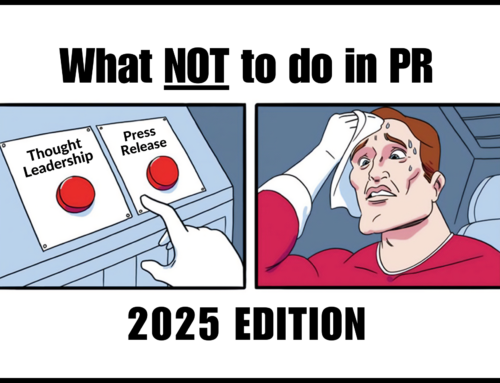
PR results require skill. To take over a category via PR, concepts must be vetted, researched, and timely, providing meaningful insights in alignment with the targeted media environment’s priorities. They must masterfully blend in trends and data.
Sometimes the best way to understand a challenge is to look at what doesn’t work – and why. Tech marketers can pour a great deal of time and investment into a fruitless PR campaign if they aren’t careful. Lots of activity doesn’t necessarily generate solid outcomes.
Here are some tactics and approaches to steer clear of and the ways to make them successful.
#1) Press Release Bonanzas – Too many news announcements can pour cold water on a PR campaign’s momentum. It takes hours to prepare, finalize, and distribute a press release. The media are less likely to cover a news announcement from a company they have never heard from prior. Additionally, releases – if too numerous – will be ignored.
Do not sabotage your campaign by allocating time to non-impactful press releases. Instead, let the PR team put together a thoughtful strategy to space out releases in between higher-value thought leadership outreach. The right types of press releases can help catalyze coverage and drive momentum – when the content and timing are well-planned.
#2) The Wrong Media – Placements in low-quality outlets that no one will ever see will not help a company own a category. Securing placements in outlets that do not align with the company’s customer or partner base – such as a consumer-focused outlet for a B2B tech platform – is also a waste of time. In fact, too many Tier 3 placements or placements in irrelevant outlets can bring down the brand perception. PR initiatives should focus on the top priorities of a tech company, and the top media outlets aligned with the company’s vertical and business targets.
To avoid this, marketers need the PR team to define specifically the outlets they are targeting within the overall campaign. Avoid spending time on extensive question-and-answer interviews or expert bylines for low circulation and low relevancy media. Instead, the media targets must be as curated as the concept itself to ensure the most relevant media will likely cover it.
#3) Old News Blues – Going back to the well on a concept played out 6-months earlier will be a major waste of time. For PR campaigns to secure results, concepts must be forward-looking and right on the pulse of what is relevant to a media outlet’s audience. Maybe the platform was tied into a macro trend concept several months ago but it did not have the funding at the time to support a PR campaign. Well, once it’s passed, it’s history.
Instead of revisiting a trend, the PR campaign needs to look forward to new and emerging trends and be original. It is better to take a new risk, define a new path forward, and be original. To do so effectively requires researching current trends, data, and challenges that position the solution in a way that is unique to the company and its priorities.
Technology companies need a variety of tools in their arsenal to create brand awareness. These three are the most powerful for delivering results. For enduring visibility and high-concentrations of coverage, anthonyBarnum recommends starting with thought leadership and incorporating more and more complex strategies over time.





